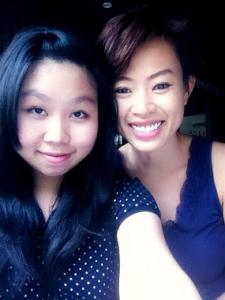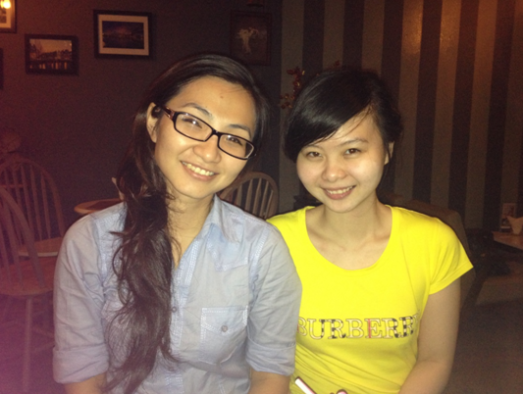“If the creative work fails, the account fails, If the account fails, the creative fails.”
Interview by Elaine Calibara – s3461778 – Group 1
Within an advertising communications agency, one would know that there is a strong difference between the creative team and the accounts team. On one hand there are the creative thinkers, the innovators, the artistic brain behind the work, and on the other hand there are the analytical, result-oriented, logical thinkers. In such a parallel atmosphere, does the “us vs. them” concept exist?
“It shouldn’t be considered like that, why does one have to be either of the two?” Ramon Calibara, Executive Creative Director of Chuo Senko Vietnam responds to my question in asking whether he thought his company is account driven or creative driven. From the outset I was taken back hearing this after only the third question of the interview as expectations led me to think there were two opposing sides within an agency.
Upon hearing that a key member of the creative team could view the relationship between his own team and the accounts team as not a notion of differences, there is now a desire to learn how Chuo Senko Vietnam demonstrates effective teamwork. When discussing his team, there is a drive and passion in his voice, “There is an existing team spirit that everyone has, motivating each team member to commit to every job that is received by the agency. Every job is a common task. Each member is responsible for the job ensuring that we are doing the best work at its highest potential”. This is a clear depiction of a strong corporate culture.
Following the discussion of effective teamwork, Mr.Calibara offered to share insight to when the accounts team and his own team illustrated, in his opinion, one of the better successes of the agency. This success is at the root of his creative team, the accounts team and the client’s leap to help the agency. In 2013, Century pacific group hired Chuo Senko to create a campaign for them, “the client gave us a reasonable amount of time to work the campaign out and so the client service team came to the creative with a brief form the client that was so clear and well understood simply because the client side brought Vietnamese counterparts. The brief was written in Vietnamese and was only translated back to English for me to understand it.” After hearing how language barriers were no longer an obstacle he further added, “this translated in perfect harmony with the client service team and of course us, the creative team. It was very successful, the creative images were created a year ago and are still being used as we speak.”
This display of harmony between the accounts team and the creative team solidify Darryl Ohrt’s view that “there is a clear difference between the two cultures. And it’s not that creative-driven agencies don’t care about their clients, or that account-driven agencies can’t conceptualize. They do, and they can.” (Ohrt 2010)
After learning more about the internal environment of Chuo Senko Vietnam, I wanted to know how the practice of effective teamwork contributes to the external environment – their clients. In building their relationships with their clients “The quality of service needs to be taken into account and giving the client the best quality possible at the lowest price.” What Chuo Senko offers is the most ideal for their clients and displays the concept of the quality-price-time triumvirate model:
Although Mr.Calibara does not mention time as a factor to provide the best for their clients, he does point out in his example that client’s give them an honest timeline of when the work is needed.
Mr.Calibara shared valuable opinions and knowledge on how the creative team and the accounts team work harmoniously to achieve the best work for their agency. His last remark as the interview ended he said, “There will always be disputes between the creative team and account team. It is all a process. It is a metamorphosis of the work. We are one voice, one name, and one team. If the creative work fails, the account fails, If the account fails, the creative fails.”
Word count: 688
References:
Darryl Ohrt, (Oct 12 2010) Advertising Age, http://adage.com/article/small-agency-diary/advertising-agency-account-driven-creative-driven/146361/, 02/05/2014
Monica Morelos, (22 March 2012 ) ClientManagementvn, https://clientmanagementvn.wordpress.com/2012/03/22/quality-vs-price-triumvirate-model/, 01/05/2014












 This factor is one of elements that shape the organisational culture, the story behind the founder of the organisation. Mr. Phuc believes that it is essential because Ms. Huong has set the value of the company and his job, as the new comer, has to try his best in order to maintain the standard. Additionally, Sunflower has become a prestigious company for any journalist looking for the next level in their career, Mr. Phuc is not exceptional. Unlike other magazine brand, Esquire has only one headquarter in USA. Mr. Phuc always tries to perform well in his daily task so he can have an opportunity to be trained in the USA like his boss.
This factor is one of elements that shape the organisational culture, the story behind the founder of the organisation. Mr. Phuc believes that it is essential because Ms. Huong has set the value of the company and his job, as the new comer, has to try his best in order to maintain the standard. Additionally, Sunflower has become a prestigious company for any journalist looking for the next level in their career, Mr. Phuc is not exceptional. Unlike other magazine brand, Esquire has only one headquarter in USA. Mr. Phuc always tries to perform well in his daily task so he can have an opportunity to be trained in the USA like his boss.




















